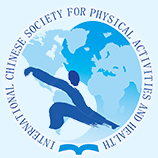Document Type
Article
Keywords
youth activity, sedentary time, accelerometer, Hispanic/Latinos
Publication Date
5-9-2024
Abstract
Objectives: The increasing rates of physical inactivity and sedentary behaviors among youth are a significant public health concern. The greatest disparities in physical activity (PA) are experienced by underserved (racial/ethnic minority, low-income) youth. This study aimed to characterize accelerometer-measured PA behaviors in a sample of low-income, predominantly Latino, preadolescents. Methods: Participants wore wrist worn GENEActiv accelerometers for 7 days. PA levels were classified as sedentary (< 50 mg), light (50-150 mg), moderate (> 150-500 mg), vigorous (> 500 mg), and MVPA (≥ 150 mg). Time spent in PA levels and sedentary time (ST), prevalence of meeting MVPA guidelines, and PA volume were estimated from accelerometer data. Three-way between-group multivariate analyses of variance examined adjusted differences between age, sex, and weight status groups across activity outcomes. Results: Participants (N=68, Mage= 9.45 ± 1.73 years) spent an average of 103 minutes/day in MVPA and 50% of participants met MVPA guidelines. They also spent 65% of their wake time at a sedentary level. Participants engaged in more total PA (p < .001) on weekdays than weekends. Older participants (10-12 years) spent more min/day in ST (p < .01) and had lower PA volume (p < .01) than younger participants (6-9 years). Girls spent more time in bouts of MVPA (p < .01) and had higher PA volume (p = 0.1) than boys. Conclusions: The findings of this study indicate that preadolescents spent a high proportion of time being sedentary and still met MVPA guidelines. More research is needed to understand the underlying causes of PA and ST patterns found in this study.
DOI
https://doi.org/10.18122/ijpah.3.2.4.boisestate
Recommended Citation
Behar, Alma I.; Mahar, Matthew T.; Norman, Gregory; Elder, John P.; Pratt, Michael; Dionicio, Patricia; and Crespo, Noe C.
(2024)
"Physical Activity in Underserved Preadolescents: Characterization of Accumulation and Patterns,"
International Journal of Physical Activity and Health: Vol. 3:
Iss.
2, Article 4.
DOI: https://doi.org/10.18122/ijpah.3.2.4.boisestate
Available at:
https://scholarworks.boisestate.edu/ijpah/vol3/iss2/4
Included in
Community Health and Preventive Medicine Commons, Epidemiology Commons, Exercise Science Commons, Public Health Education and Promotion Commons


